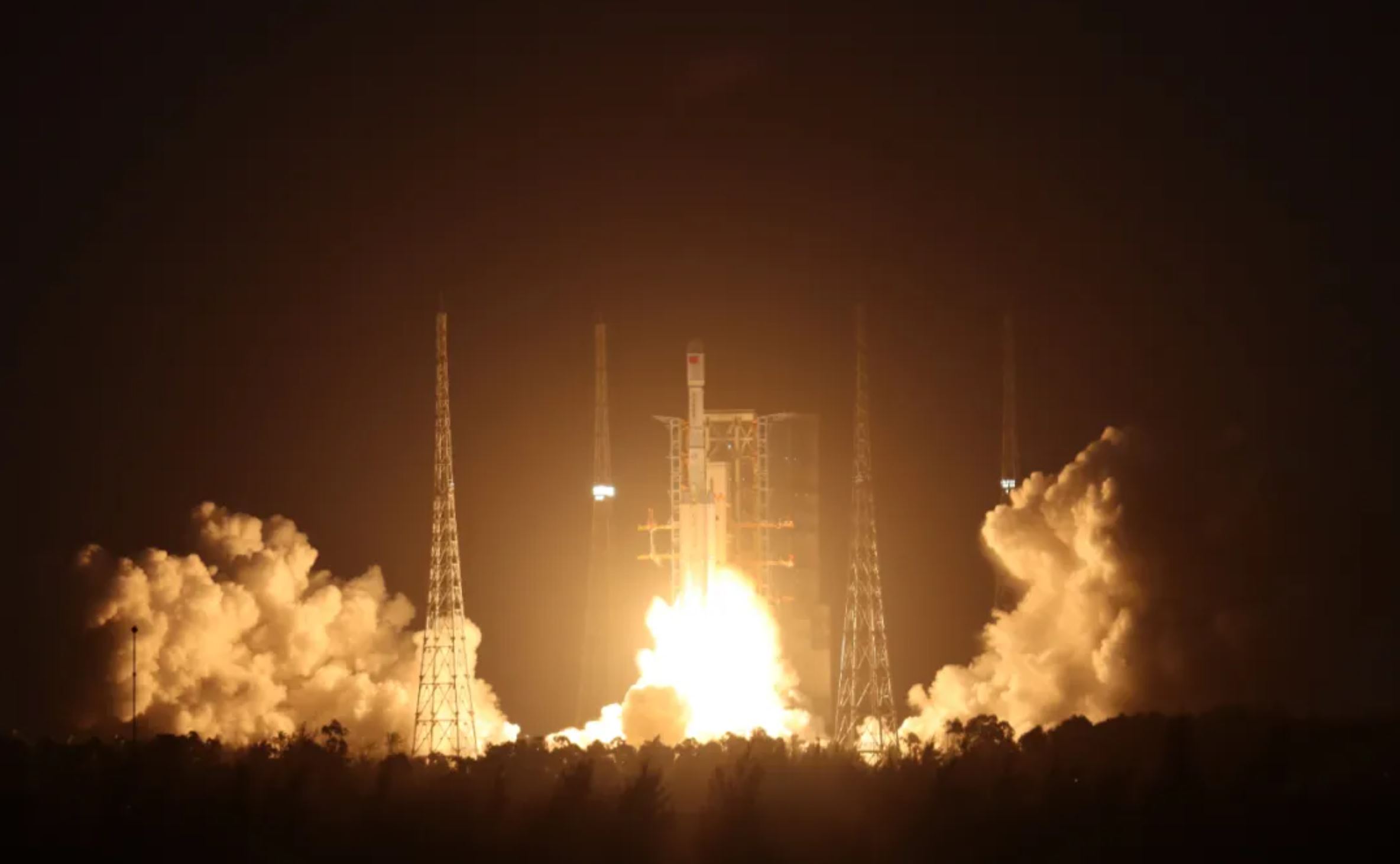HELSINKI — A classified Chinese satellite has been tracked operating in a specialized orbit, six months after an anomaly during launch appeared to leave it stranded in an initial transfer orbit.
Shiyan-10 is now in a “Molniya” orbit according to tracking data from the U.S. Space Force’s 18th Space Control Squadron (SPCS).
The satellite is in a highly elliptical 1,880 by 38,881 kilometer altitude orbit with an inclination of 63.6 degrees. This indicates that the spacecraft has made a big alteration to its earlier orbital inclination to serve a specific set of tasks over the northern hemisphere.
Such orbits—the highly elliptical nature of which means spacecraft spend most of their roughly 12-hour orbital period visible over the northern hemisphere—are used for communications, remote sensing or missile early warning systems, climate and weather monitoring, early warning systems and other purposes such as signals intelligence.
Geosynchronous orbits are used to provide constant communications services to equatorial and lower latitude regions, but these are not suitable for serving high latitudes. Molniya orbits are highly elliptical alternatives for high latitudes theorized by Soviet scientists in the 1960s.
How China intends to use the Shiyan-10 satellite is not known. Shiyan series satellites are often classified and understood be used to test new technologies and payloads for Chinese space systems.
The Soviet Union/Russia, the National Reconnaissance Office (NRO) and other U.S. entities have used Molniya orbits, but Shiyan-10 appears to be a first case for China.
Launch trouble, recovery and rediscovery
Shiyan-10 launched on a Long March 3B from Xichang Satellite Launch Center Sept. 27, 2021. Chinese media reported that while the launch proceeded normally, the satellite operating conditions were abnormal.
The satellite was initially in what appeared to be a geosynchronous transfer orbit, but apparently unable to fire its main engines to enter its likely intended geostationary orbit.
However by mid-October the satellite had raised its perigee—the point of closest approach to Earth during its orbit—indicating that the satellite was active. However, the changes in altitude were small, suggesting only smaller engines were working.
To enter GEO, Shiyan-10 would have gradually circularized its highly-elliptical orbit to enter an orbit which would keep it fixed over point over the Earth. Instead, after months of apparent inactivity between October and February 2022, it performed a fuel-intensive maneuver to change its inclination to enter a Molniya orbit.
Satellite tracker Jonathan McDowell, also of the Harvard-Smithsonian Center for Astrophysics, tweeted that Shiyan-10 was still in its 51.1 degree orbit following small orbit raising moves in late February.
Then, however, McDowell notes that new orbital data from SPCS was not available until late March, when Shiyan-10 was apparently “rediscovered” in its new orbit and inclination.
No more US tracking data is available until the end of March, when it was rediscovered in a 1853 x 38878 km x 63.6 deg orbit – note the big inclination change. The 63 deg is ‘special’, as the Earth’s flattening locks in the latitude of perigee. This is called a Molniya orbit
— Jonathan McDowell (@planet4589) April 15, 2022
The highly elliptical orbit means Shiyan-10 will spend much of its 12-hour-period orbit over the northern hemisphere.
When the spacecraft is near its apogee over the northern hemisphere, it will appear to move slowly over the Earth below. This makes the orbit useful for providing communications between two sites in the northern hemisphere or monitoring for early warning. Constant services can be provided by placing three satellites in similar Molniya orbits, each providing links for several hours each day.
China operates its China Remote Sensing Satellite North Polar Ground Station, which is located in Kiruna, northern Sweden, which would be visible to Shiyan-10 for long periods near its apogee.
China’s space capabilities and activities have grown in recent years. The country plans to launch more than 50 times in 2022 and complete its three-module crewed space station.
Within the last 18 months China has successfully landed a rover on Mars and collected samples from the moon, while also testing classified spaceplanes and other systems.
A new report released April 12 by the Defense Intelligence Agency notes that the space fleets of China and Russia grew more than 70% in just over two years. The unclassified report claims this is “evidence of both nations’ intent to undercut U.S. and allied global leadership in the space domain.”
A Chinese Foreign Ministry spokesperson responded April 13 by calling the US the “top threat to security in outer space,” and accused the country of “developing and deploying offensive space weapons.”
